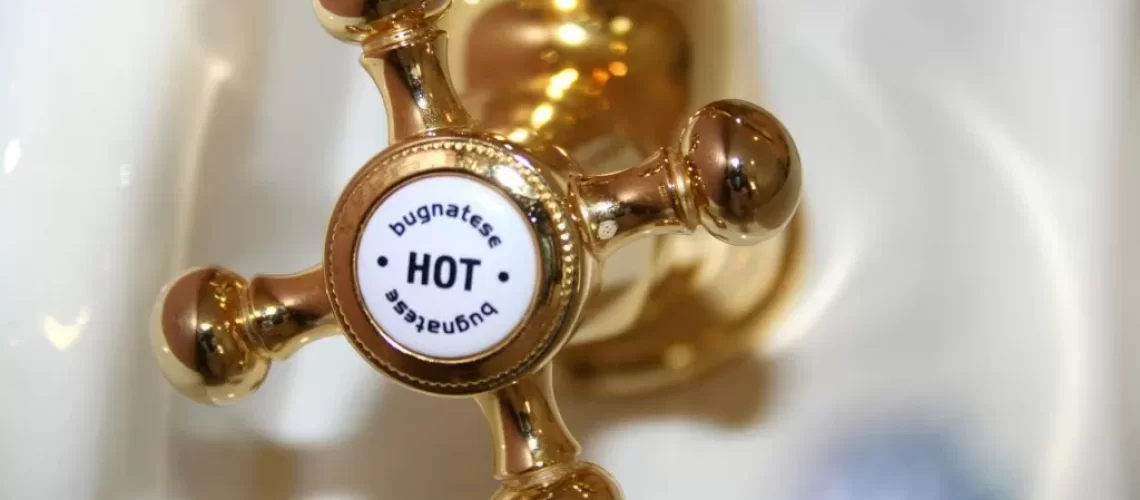Close your eyes, and now think of a tap. Which image emerged in your mind? A run-of-the-mill pillar tap? A modern mixer tap? A tap with a ‘normal’ washer, or one of those ceramic disc versions? Something else entirely? As you can tell, there are plenty of different tap types out there – and if you’re in the market for a replacement or a round of renovations, that can be a little overwhelming.
So to clear up some of that confusion, our Adelaide plumbing company put a little something together that should make the tricky world of taps just a little bit easier.
Whether you’re looking at leaking tap repair or replacement, read on!
1. The materials
Chrome, brass, stainless steel … gold? These days, you can get taps made of all sorts of different materials – and the choice really is yours. Obviously the price will differ, but the material itself won’t really change the way the tap works. So pick what your budget will allow – and feel free to experiment with the texture and finish, too.
2. Mixer taps
The stereotypical ‘tap’ is a single handle with a single spout – but much more common these days are mixer taps. This layout allows the user to manipulate the handle to get exactly the mix of hot and cold water they desire. They’re also very easy to use – a simple flick of the handle is normally all it takes to go from ‘full off’ to ‘full on’ and vice versa.
3. Tap styles
Just like the materials, there are plenty of tap styles, too. The ones with a handle shaped like a cross, for instance, is a crosshead tap, but lever taps are more common these days. The tap may be mounted to the base, or separately, and then there are pedestal taps, double-lever taps, taps mounted to the wall – and literally hundreds of others.
4. How do taps work?
The way your taps interact with your plumbing system differ as well. You’re probably most familiar with compression-style taps, which screw down on a washer and metal seat to restrict the flow of the water. With this tap type, the washer will eventually need replacing – so you may consider one of the washer-less types of tap – ball, cartridge and ceramic disc:
- Ball: The water flow is increased or decreased with a stainless steel or plastic ball, which also regulates the temperature. Although you won’t need to change any washers, these taps do tend to leak a little more.
- Cartridge: The cartridge restricts the water’s flow by moving up and down, while manipulation to the left and the right alters the temperature.
- Ceramic disc: This tap type, which is the one least likely to require any maintenance, operates with the help of two ceramic plates sliding over one another.
5. Water efficient taps
Look out for the government’s Water Efficiency Labelling (WELS) on the tap product you buy – the more stars, the more efficient it is. For taps, this is determined based on the water flow rate, but bear in mind that the more water-efficient your tap is, the less energy you’ll use as well to heat that water up.
The obvious exception is the water tap types you’re browsing for your bath. In this case, the WELS rating is not just irrelevant, you’re actually much better off buying a tap with unrestricted flow – so your bath fills up quickly without losing too much heat as you wait to hop in!
6. Which type of tap will you choose?
We hope our summary of the various tap styles and types was helpful! At the end of the day, a lot depends on how much you want to spend, and what you best like the look of. However, make sure you’re not going to graze your skin in the bath, easily bump your tap into a freezing cold setting half-way through a shower, or find your new tap tricky or frustrating to use with wet or dirty hands – and many other considerations.
Are you having trouble deciding which types of tap are right for you? Here at Fawcett Plumbing, we’re more than happy to drop some wisdom your way with our vast experience of household and commercial plumbing – whether you’re doing a full bathroom plumbing & renovation or a single tap needs replacing. We can’t wait to hear from you.






